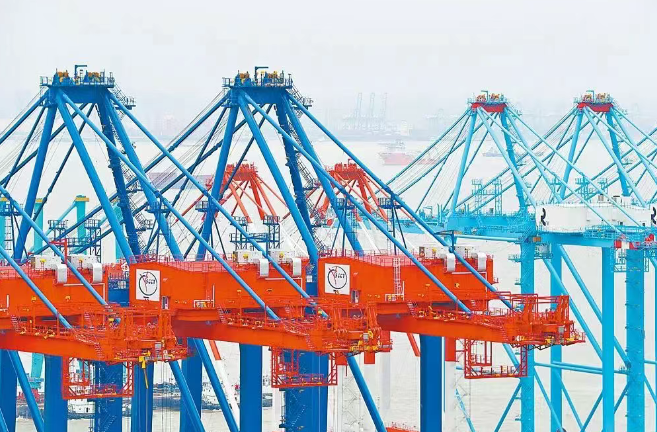80% of the gantry cranes are made in China. US ports call for postponing the tariff increase.
According to reports from Taiwan media, recently, the port operators in the United States have collectively expressed their stance, strongly urging the Trump administration to postpone the plan of imposing new tariffs on port equipment such as cranes produced for China.
According to a report by The Wall Street Journal on July 9th, the industry has warned that 80% of the gantry cranes at US ports are manufactured by Chinese enterprises. If the new tariff policy is implemented, the cost of upgrading key port equipment will soar by tens of millions of dollars, and it will take at least ten years for the local industry to rebuild similar production capacity. In the short term, this is likely to trigger a supply chain paralysis crisis.

Currently, 80% of the gantry cranes at US ports are manufactured by Chinese enterprises. Shipping industry data shows that China accounts for over 70% of the global crane production. Its equipment is favored due to stable supply and low prices. The average price of a Chinese-made crane is 15 million US dollars, which is several million dollars cheaper than products from Europe and the United States.
Carl Benczel, the president of the American Port Employers Association, disclosed that he has made multiple trips to the White House to negotiate, emphasizing that the new tariffs would "punish those ports that have already placed orders", but the government insisted on "forcing alternative procurement through high tariffs". There are serious differences between the two sides on the issue of the transitional period.
The tariffs to be imposed this time will be added on top of the 25% rate that was already in place during the Biden administration, resulting in a double blow. The CEO of the Port of Houston, Charlie Jenkins, stated outright that the port will need to purchase 22 cranes in the next six years. If the tariffs take effect, it may have to bear an additional cost of 100 million US dollars.
What is even more serious is that manufacturers outside China generally have insufficient production capacity, and it will take ten years for the US to rebuild its production lines. This is like pouring water into a fire that is already burning close by - it won't help at all.
The port operator has proposed a compromise solution: exempting tariffs for equipment ordered by the end of 2024 and granting a 3-year transition period. The new policy will be implemented after the domestic or allied countries' production capacity has improved.
It is worth noting that this tariff plan is a microcosm of the Trump administration's trade restrictions against China. The US Trade Representative Office (USTR) previously announced that starting from October, additional fees would be imposed on Chinese shipbuilding companies, and it also planned to impose taxes on foreign cargo ships. These measures were all resisted by the industry.
The US Chamber of Commerce has warned that the tariffs on cargo ships for transporting vehicles could increase the cost of each vehicle by $300, threatening the stability of the supply chain.
Furthermore, China has always been the largest source country for US clothing imports. However, after Trump raised the equivalent tariffs on China by 145% in April, many American retailers reduced their purchases from Chinese factories.
According to data from the US International Trade Commission (USITC), the amount of clothing imported by the US from China in May dropped to $556 million, the lowest monthly figure in 22 years, highlighting the impact of the high tariffs imposed by the US.
声明:转载此文是出于传递更多信息之目的。若有来源标注错误或侵犯了您的合法权益,请作者持权属证明与本网联系,我们将及时更正、删除,谢谢。
2025-07-11来源:中国时报
Recent news

80% of the gantry cranes are made in China. US ports call for postponing the tariff increase.

Boat, boat, boat! More than 60 new ships are under construction in Shanghai's three big Ships

Will the US impose 60% tariffs on all Chinese goods? Response of the Ministry of Foreign Affairs

Maersk set up an international transshipment center in Lingang, Shanghai

"Sea Hercules" and new Chinese ships Hudong China opened a new beginning of the New Year ship delivery

More than 500 ships! Ningde time on board

Swim upstream! Chinese shipping company to carry out Red Sea express


